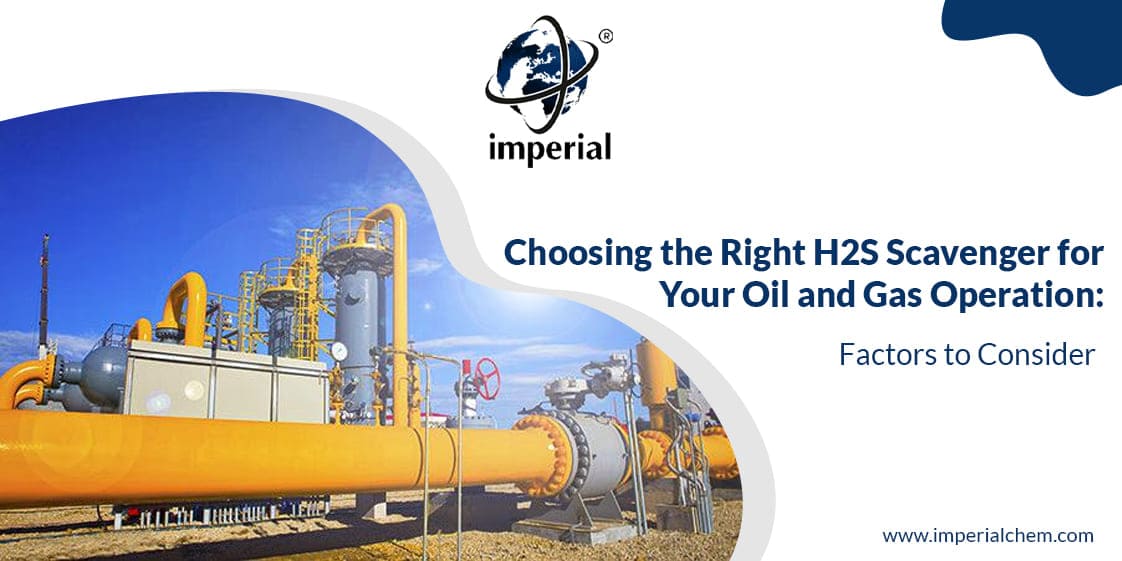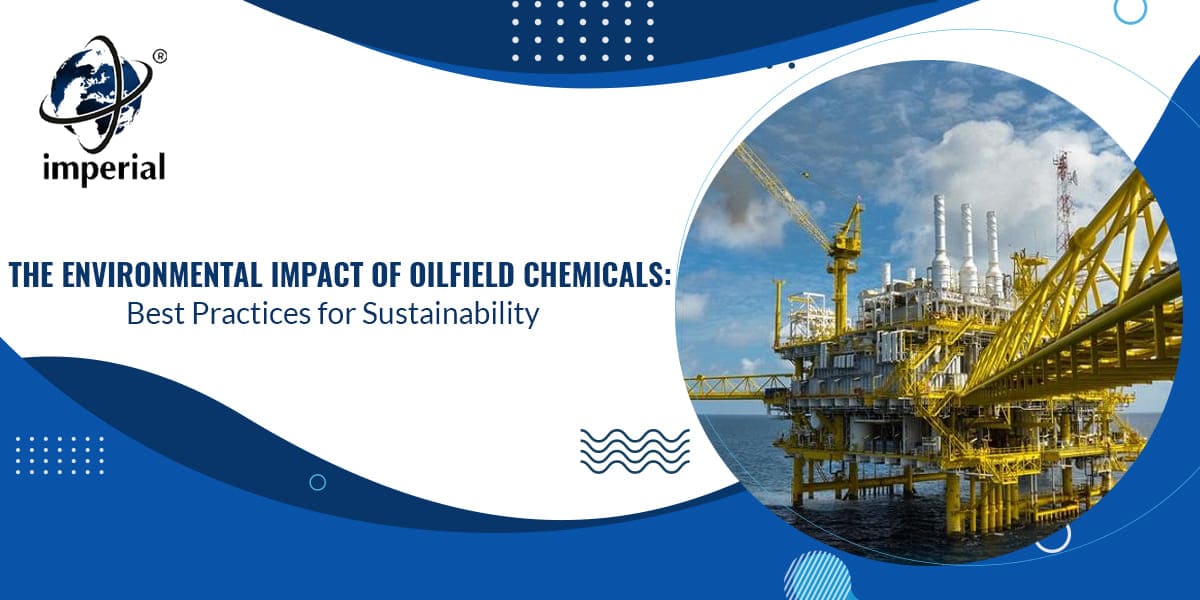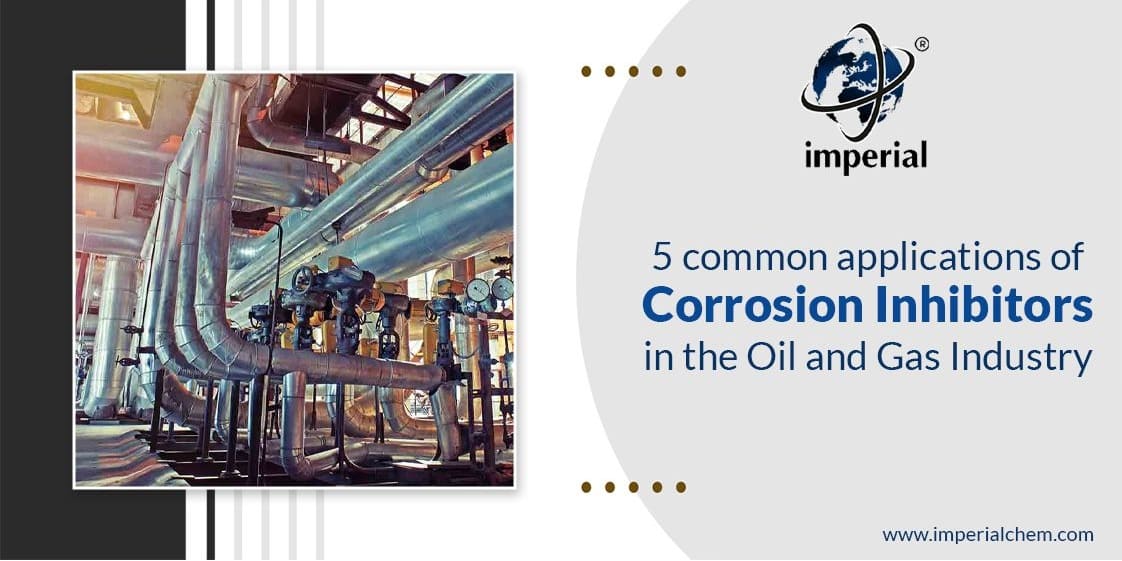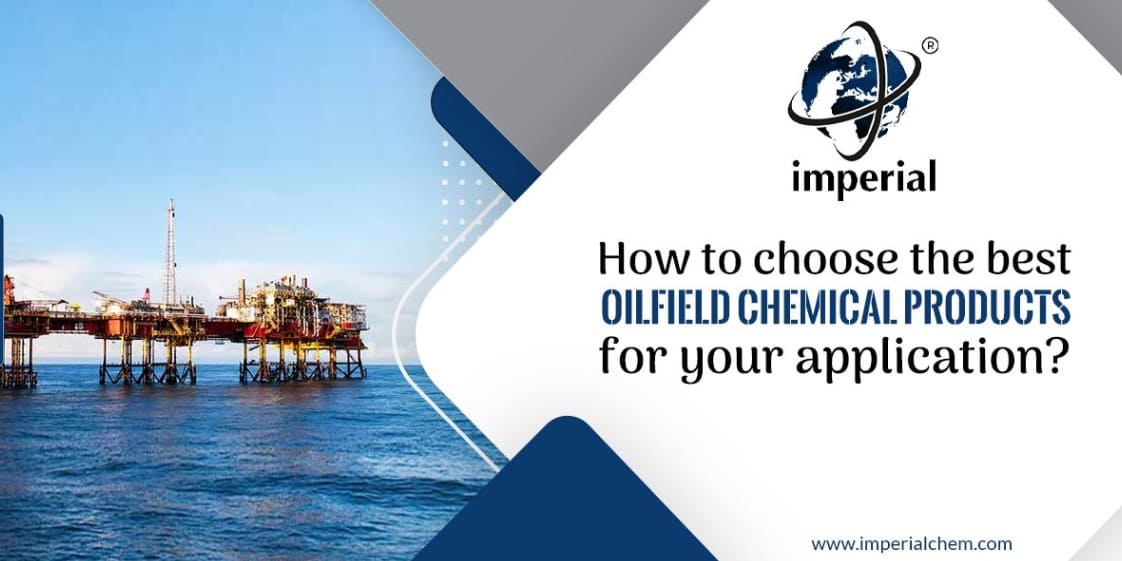- All Products
- Corrosion Inhibitor
- Oxygen Scavenger
- Drag Reducing Agent / Flow Improver
- H2S Scavenger
- Triazine
- Demulsifier
- Emulsion Breaker
- Surfactant
- Wax / Parrafin Disperssant
- Asphaltene Inhibitor

Blog Details

08
May
The Role of Oxygen Scavengers in the Oil and Gas Industry: Applications and Benefits
The oil and gas infrastructure market is expected to increase at a CAGR of over 6% between 2022 and 2030, from its current value of over USD 620 billion in 2021. The oil and gas industry's infrastructure consists of a wide variety of structures and equipment, such as refineries, pipelines, terminals, drilling platforms, processing units, as well as storage facilities. Increasing natural gas exploration and production demand will have a beneficial impact on the market.

Shale oil, tight gas, and other unconventional oil and gas assets, as well as cutting-edge technical solutions for higher, more efficient production, are what will ultimately drive market expansion. Moreover, increased demand for light distillates and a sudden rise in the amount of investment needed to increase the output of crude oil will certainly boost the industry environment.
One industry hit hard by the COVID-19 epidemic is the oil and gas infrastructure sector. Forced lockdown constraints in several regions of the world slowed back the progress of the main projects. Reduced demand from consumers and factories for oil and gas has an international impact on the energy sector's ability to meet demand.
Different oilfield chemicals used in Oil and Gas industry:
The Oil and Gas industry uses a variety of chemicals to extract, process, and transport hydrocarbons efficiently. Here are some of the most common oilfield chemicals used in the industry:
● Corrosion Inhibitors: These chemicals are used to prevent corrosion in pipelines, tanks, and other equipment that come in contact with hydrocarbons. Corrosion inhibitors work by forming a protective layer on the metal surface, preventing the formation of rust and other corrosive compounds.
● Scale Inhibitors: These chemicals are used to prevent the buildup of mineral scales in pipes and other equipment that come in contact with brine water. Scale inhibitors work by altering the crystal structure of minerals, preventing them from adhering to the metal surface.
● Biocides: These chemicals are used to control the growth of bacteria, fungi, and other microorganisms that can cause damage to equipment and reduce hydrocarbon production. Biocides work by disrupting the cellular processes of microorganisms, preventing them from multiplying.
● Demulsifiers: These chemicals are used to separate water from oil and gas during the production process. Demulsifiers work by breaking down the emulsion, allowing water to be separated from the hydrocarbons more efficiently.
● Surfactants: These chemicals are used to reduce the surface tension between oil and water, making it easier to extract hydrocarbons from reservoirs. Surfactants work by altering the interfacial tension between oil and water, allowing oil droplets to be suspended in water more easily.
● Friction Reducers: These chemicals are used to reduce friction in pipelines and other equipment, allowing hydrocarbons to flow more efficiently. Friction reducers work by reducing the viscosity of fluids, making them easier to transport.
● Polymer Flooding Agents: These chemicals are used to enhance oil recovery by increasing the viscosity of water injected into reservoirs. Polymer flooding agents work by altering the flow properties of water, making it more effective at pushing oil to production wells.
Keep your food fresher, and longer with top-quality oxygen scavenging films in food packaging industry manufactured and supplied by Imperial Oilfield Chemicals - the provider of the ultimate food packaging solutions!
Oxygen Scavengers:
Oxygen scavengers are chemical compounds used in various industries to remove dissolved oxygen from water or other fluids. Dissolved oxygen in water can cause corrosion and damage to metal equipment, pipelines, and other components, leading to reduced efficiency, increased maintenance costs, and safety risks.
Oxygen scavengers work by chemically reacting with dissolved oxygen, converting it into another compound that does not cause corrosion. The most common type of oxygen scavengers used in industrial applications is sulfite-based compounds such as sodium sulfite or sodium bisulfite.
The mechanism of action of sulfite-based oxygen scavengers involves the reaction between dissolved oxygen and the sulfite ion. This reaction produces sulfate ions and removes oxygen from the system. The reaction rate depends on factors such as pH, temperature, and the concentration of sulfite ions in the system.
Oxygen scavengers are widely used in the power generation, oil and gas, and food and beverage industries to prevent corrosion and damage caused by dissolved oxygen. In the power generation industry, oxygen scavengers are commonly used in steam systems to prevent corrosion of turbines, boilers, and other equipment. In the oil and gas industry, they are used to protect pipelines and storage tanks from corrosion caused by dissolved oxygen. In the food and beverage industry, oxygen scavengers are used to preserve the quality of packaged foods and beverages by removing oxygen from the packaging.
Applications of Oxygen Scavengers:
Oxygen scavengers have a wide range of applications in various industries where dissolved oxygen can cause corrosion and damage to equipment. Some of the common applications of oxygen scavengers are:
● Water treatment: Oxygen scavengers are widely used in water treatment processes to remove dissolved oxygen and prevent corrosion of pipelines, tanks, and other equipment. This is particularly important in industrial processes such as power generation, oil and gas production, and chemical processing.
● Food and beverage preservation: Oxygen scavengers are used in food and beverage packaging to preserve the quality and freshness of the product by removing oxygen from the packaging. Imperial Oilfield Chemicals offer excellent oxygen scavenging films in food packaging industry, experience the freshness in every bite with our oxygen-scavenging films - keeping your food deliciously perfect!"
● Boiler and steam systems: Oxygen scavengers are commonly used in boiler and steam systems to prevent corrosion and damage to equipment caused by dissolved oxygen. This is particularly important in power generation and industrial heating systems.
● Oil and gas production: Oxygen scavengers are used in various stages of oil and gas production, such as drilling, production, transportation, and refining, to prevent corrosion of equipment and pipelines.
● Pharmaceutical industry: Oxygen scavengers are used in pharmaceutical manufacturing processes to remove dissolved oxygen and prevent oxidation of sensitive compounds.
Preserve the potency of your medication with excellent oxygen scavenger solutions for pharmaceutical packaging industry manufactured and supplied by Imperial Oilfield Chemicals - because your health deserves the best!
Benefits of using Oxygen Scavengers in the Oil and Gas Industry:
● Preventing corrosion:
Oxygen scavengers help to remove dissolved oxygen from water and other fluids, which can prevent the corrosion of pipelines, tanks, and other equipment. This can help to reduce maintenance costs and extend the lifespan of equipment.
● Improving efficiency:
By preventing corrosion and damage to equipment, oxygen scavengers can help to improve the efficiency of oil and gas operations.
● Ensuring safety:
Corrosion and damage to equipment caused by dissolved oxygen can pose safety risks to workers and the environment. By preventing corrosion, oxygen scavengers can help to ensure safe and reliable operations.
● Extending equipment lifespan:
By preventing corrosion and damage to equipment, oxygen scavengers can help to extend the lifespan of the equipment.
● Meeting regulatory requirements:
The use of oxygen scavengers is often required by regulatory bodies to ensure the safe and environmentally responsible operation of oil and gas facilities. By using oxygen scavengers, companies can ensure compliance with these requirements.
Protect your equipment, enhance efficiency, and ensure safety with reliable oxygen scavengers manufactured by Imperial Oilfield Chemicals - an excellent provider of Oxygen Scavengers in the Oil and Gas Industry!
Importance of using Oxygen Scavengers in the Oil and Gas Industry:
Oxygen scavengers play a crucial role in the oil and gas industry by preventing corrosion caused by dissolved oxygen in water or other fluids. Corrosion can occur in pipelines, tanks, and other equipment that come into contact with hydrocarbons and water, leading to reduced efficiency, increased maintenance costs, and safety risks.
In the oil and gas industry, oxygen scavengers are commonly used in processes such as drilling, production, transportation, and refining. For example, during the drilling process, water-based drilling fluids are used to lubricate the drill bit and remove drill cuttings. These fluids can become contaminated with dissolved oxygen, which can cause corrosion of the wellbore and other equipment.
Similarly, during the production process, water is often used to extract hydrocarbons from reservoirs. This water can contain dissolved oxygen, which can cause corrosion of production wells, pipelines, and other equipment.
Oxygen scavengers are added to these fluids to remove dissolved oxygen and prevent corrosion. The most commonly used oxygen scavengers in the oil and gas industry are sulfite-based compounds, such as sodium sulfite or sodium bisulfite. These compounds react with dissolved oxygen to convert it into another compound that does not cause corrosion.
In addition to preventing corrosion, oxygen scavengers can also help to improve the efficiency and reliability of oil and gas operations. By reducing corrosion and damage to equipment, companies can reduce downtime, maintenance costs, and the risk of accidents and spills.
Final Thoughts:
Oxygen scavengers play a crucial role in the oil and gas industry by preventing corrosion caused by dissolved oxygen in water and other fluids. Corrosion can lead to reduced efficiency, increased maintenance costs, safety risks, and environmental damage. Oxygen scavengers are commonly used in processes such as drilling, production, transportation, and refining to remove dissolved oxygen and prevent corrosion. The most commonly used oxygen scavengers in the oil and gas industry are sulfite-based compounds, such as sodium sulfite or sodium bisulfite. In addition to preventing corrosion, oxygen scavengers can also help to improve the efficiency and reliability of oil and gas operations and reduce downtime, maintenance costs, and the risk of accidents and spills.
The applications of oxygen scavengers are not limited to the oil and gas industry. They have a wide range of applications in various industries such as water treatment, food and beverage preservation, pharmaceutical manufacturing, and boiler and steam systems. The use of oxygen scavengers in these industries can prevent corrosion, improve efficiency, extend equipment lifespan, ensure safety, and meet regulatory requirements. Overall, the use of oxygen scavengers is an important aspect of ensuring safe and reliable operations in many industries, particularly those where corrosion caused by dissolved oxygen can pose significant risks to workers, the environment, and equipment.











